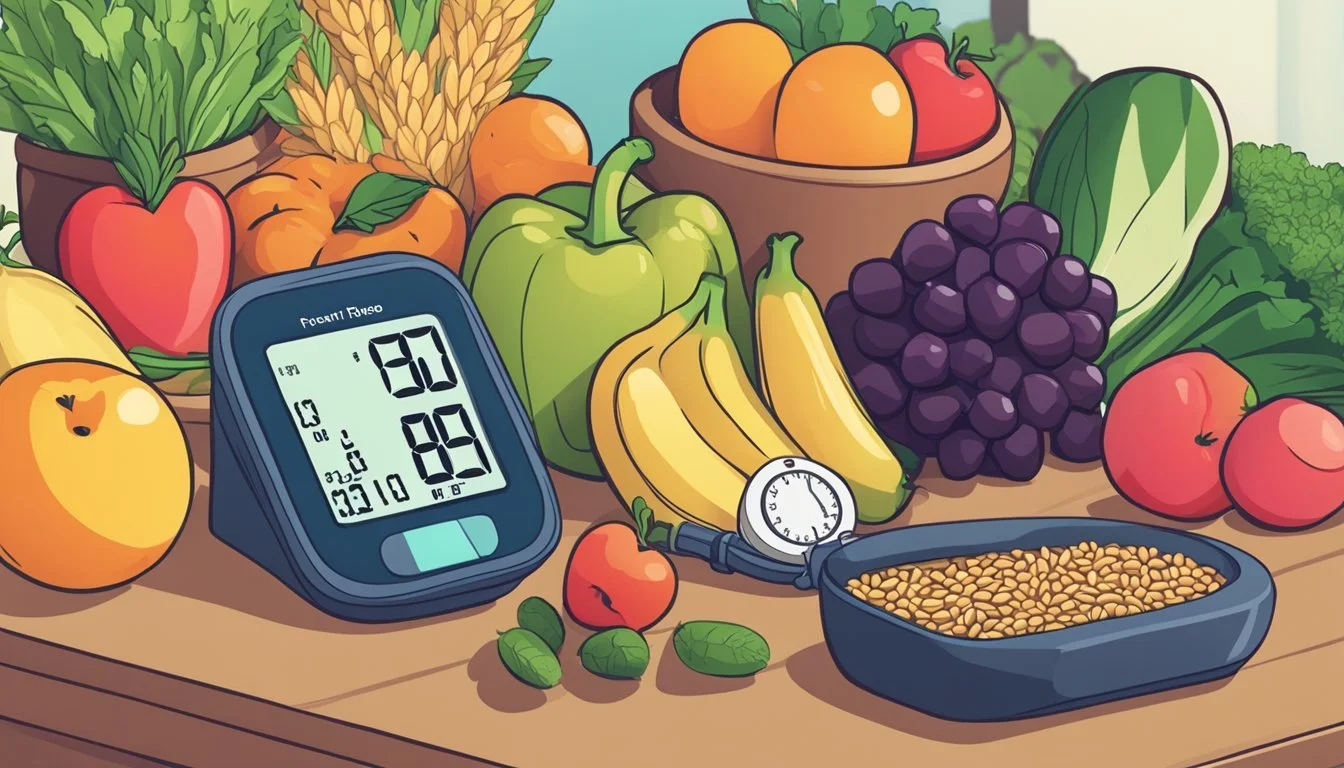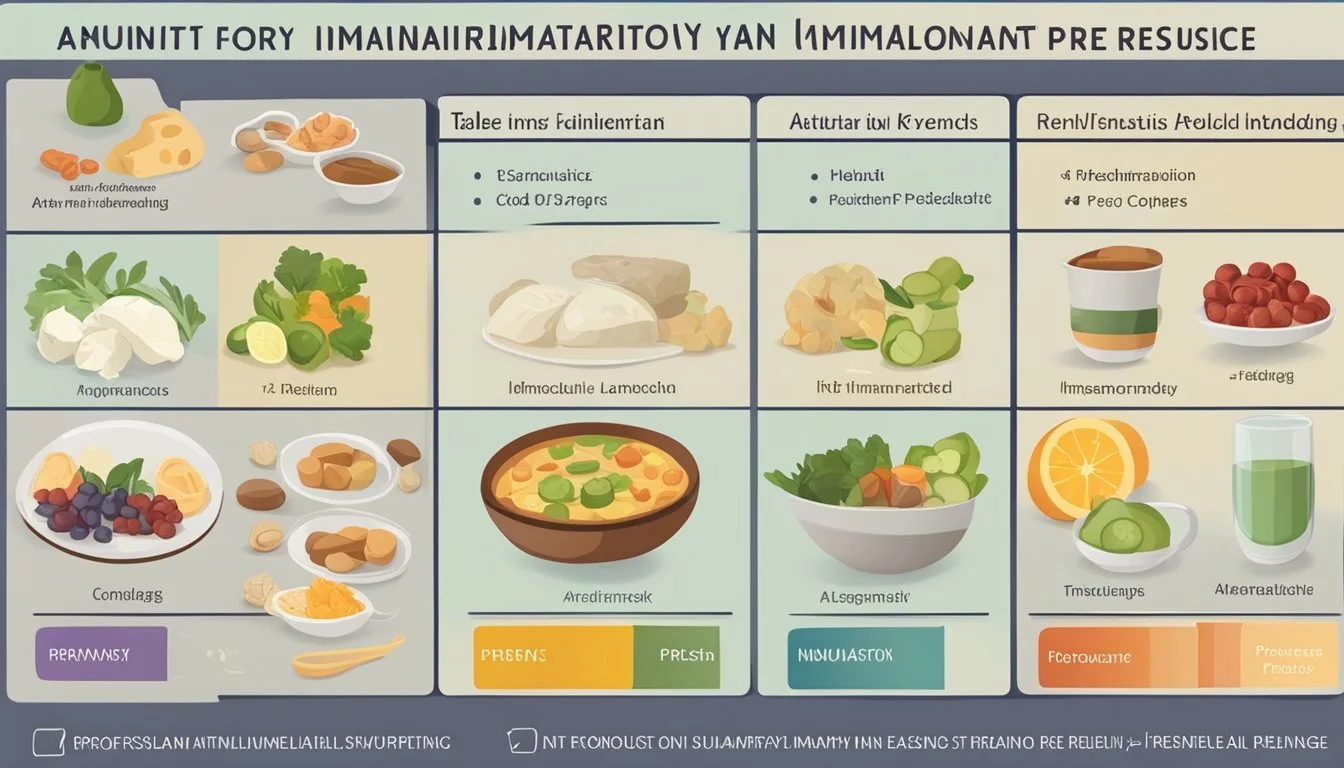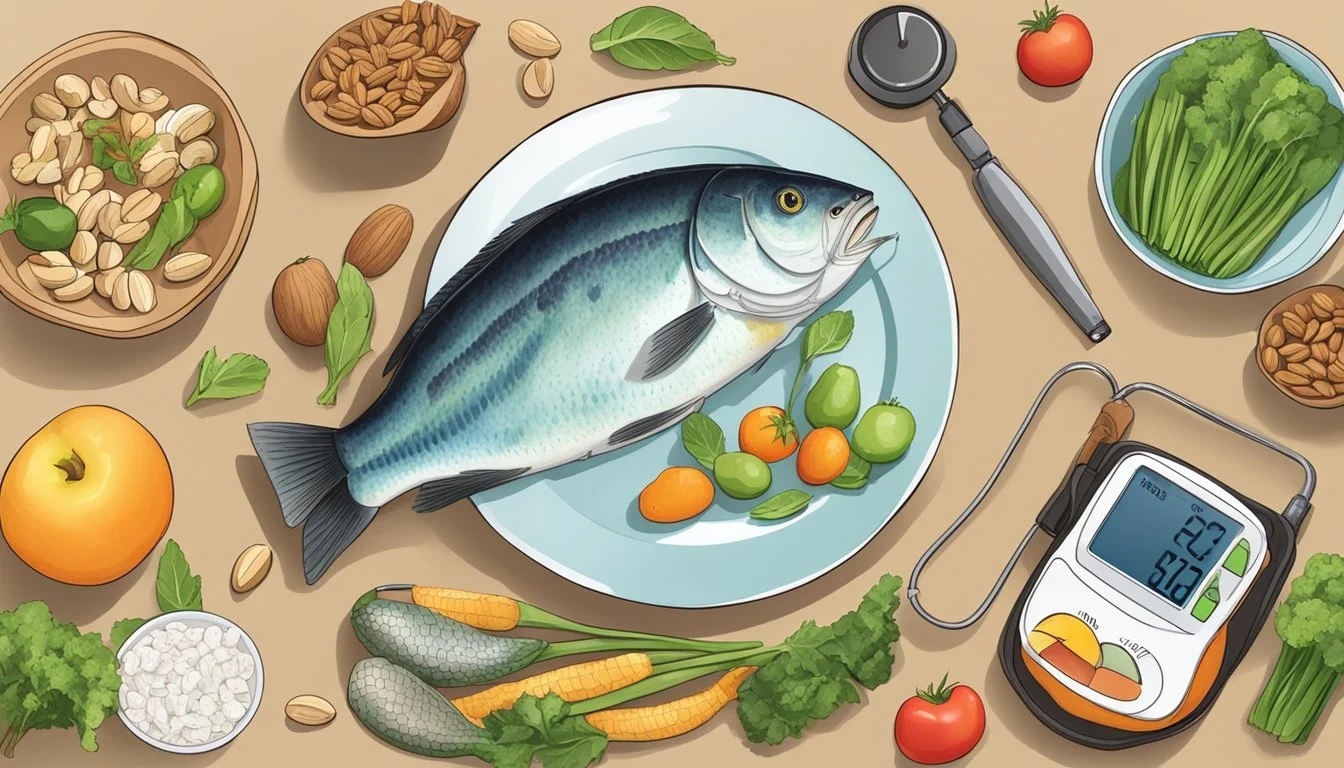How does the Anti-Inflammatory Diet Affect Blood Pressure?
Exploring the Connection
The relationship between diet and health is a cornerstone of preventive medicine, and the impact of an anti-inflammatory diet on blood pressure is an area of particular interest to nutritionists and healthcare professionals. An anti-inflammatory diet, characterized by the consumption of foods that reduce inflammation in the body, has shown promise as an effective way to manage and lower high blood pressure. Chronic inflammation is increasingly recognized as a significant factor in the development of hypertension and heart disease, with long-term inflammation contributing to damaged blood vessels and the formation of arterial plaque.
Adopting an anti-inflammatory diet involves a shift toward whole, nutrient-dense foods such as fruits, vegetables, whole grains, lean proteins, and healthy fats. This dietary pattern is rich in natural antioxidants and phytochemicals that work to reduce inflammation throughout the body. By decreasing inflammation, the anti-inflammatory diet can help prevent the hardening of the arteries and improve overall cardiovascular health, which in turn helps regulate blood pressure levels. Evidence has also indicated that this diet promotes weight loss, which is a critical component in reducing and controlling hypertension.
Notably, this diet plan avoids processed and fast foods that are known to contribute to systemic inflammation. Instead, it includes foods high in potassium, calcium, and magnesium, which are minerals crucial in the modulation of blood pressure. Individuals following this dietary approach often experience a reduction in blood pressure as part of a holistic strategy to combat inflammation and support heart health.
Understanding Blood Pressure and Inflammation
Understanding how an anti-inflammatory diet affects blood pressure involves deciphering the interactions between inflammation and the cardiovascular system. This section explores the specific mechanisms at play in inflammation and the fundamentals of blood pressure regulation.
Mechanisms of Inflammation
Inflammation is the immune system's natural response to injury or infection, aiming to protect the body and aid in recovery. It can be categorized into two types: acute inflammation, which occurs shortly after a tissue damage or infection and helps in healing; and chronic inflammation, which is a prolonged inflammatory response that can potentially lead to various health conditions.
Chronic inflammation plays a critical role in heart disease, as it leads to the development of atherosclerosis—a condition characterized by the buildup of plaque in the blood vessels. This buildup consists largely of cholesterol, fatty substances, and cellular waste products, which together can cause thickening and hardening of the blood vessels. The immune response, which includes the mobilization of white blood cells and release of inflammatory substances, contributes to these changes and can cause ongoing damage to the vessel walls.
Blood Pressure Basics
Blood pressure is the force exerted by circulating blood against the walls of the body's blood vessels. It is vital for the proper function of the circulatory system. Elevated blood pressure, or hypertension, is a condition in which the blood pressure in the arteries is persistently high, making the heart work harder to pump blood.
Two key forces influence blood pressure: the amount of blood the heart pumps and the resistance it encounters in the arteries. When arteries are narrowed by the presence of plaque—a process accelerated by chronic inflammation—resistance increases and so does blood pressure. Over time, this added strain can contribute to the wearing down of the cardiovascular system and lead to complications such as heart disease.
The Anti-Inflammatory Diet Overview
The Anti-Inflammatory Diet is centered on consuming foods that reduce inflammation in the body which has implications for health, including blood pressure management.
Key Components of the Anti-Inflammatory Diet
The crux of the Anti-Inflammatory Diet involves a focus on fruits, vegetables, whole grains, and healthy fats, mainly from olive oil. There is an emphasis on consuming a variety of nuts, beans, and seeds, providing a rich source of nutrients and antioxidants. The inclusion of fish, particularly those rich in omega-3 fatty acids, is also a staple, known for their anti-inflammatory properties. This diet encourages the following:
A range of fruits and vegetables: Aiming for variety and color to ensure a wide range of vitamins, minerals, and antioxidants.
Whole and minimally processed grains: Opt for brown rice, quinoa, and whole wheat over refined grains.
Healthy fats: Primarily from sources like olive oil, nuts, and seeds.
Protein sources: Emphasizing fish and plant-based proteins such as beans and lentils.
Limited intake of red meats and processed foods.
Comparison to Other Diets
When compared to diets like the Mediterranean diet and the DASH diet, the Anti-Inflammatory Diet shares some commonalities but maintains a unique focus. Both the Mediterranean and DASH diets include fruits, vegetables, nuts, and whole grains. However, the Anti-Inflammatory Diet places a stronger emphasis on the overall pattern of anti-inflammatory foods consumed.
Mediterranean Diet: Similar emphasis on olive oil, fish, and plants, with additional allowances for moderate wine consumption.
DASH Diet: Targeted at reducing hypertension, with a focus on nutrient-rich foods and reducing sodium intake, but not as singularly focused on anti-inflammatory foods.
The dietary approaches in the Mediterranean and DASH diets also support anti-inflammatory effects, though the core intent of the Anti-Inflammatory Diet is to specifically minimize bodily inflammation.
Impact of Diet on Blood Pressure
The food choices one makes can have a direct impact on blood pressure levels. Consuming certain foods may help lower blood pressure, while others can cause an increase, contributing to hypertension.
Foods that Lower Blood Pressure
Several dietary components are known for their blood pressure-lowering effects:
Leafy Greens: Vegetables such as spinach and kale are high in potassium, which can help kidneys flush out excess sodium, lowering blood pressure.
Berries: Particularly blueberries, are rich in natural compounds called flavonoids. One study found that consuming these compounds might prevent hypertension.
Beets: High in nitric oxide, which can help open blood vessels and lower blood pressure.
Whole Grains: A good source of fiber and additional nutrients that can contribute to maintaining a healthy blood pressure.
Omega-3 Fatty Acids: Found in fish like salmon, these fats have significant anti-inflammatory properties that can help lower blood pressure.
Foods that Raise Blood Pressure
On the other hand, certain foods are known to contribute to increased blood pressure:
Processed Meats: Products like sausages and bacon are often high in sodium, which can increase blood pressure.
Processed Foods: These often contain large amounts of salt and preservatives, which can cause the body to retain water and elevate blood pressure.
High-Sodium Foods: Sodium can cause the body to retain fluid, leading to an increase in blood pressure.
Sugary Foods: Excessive sugar intake can lead to weight gain, which is a risk factor for hypertension.
Specific Anti-Inflammatory Foods and Their Effects
Consuming specific foods can have a beneficial impact on inflammation levels in the body, which in turn may affect blood pressure. Understanding how each type of food contributes can guide dietary choices for better health outcomes.
Fruits and Vegetables
Fruits and vegetables are rich in antioxidants and polyphenols which have been shown to reduce inflammation. Berries, such as strawberries and blueberries, contain anthocyanins that can decrease blood pressure. Tomatoes are high in lycopene and can help lower blood pressure. Leafy greens like spinach and kale are sources of potassium and magnesium, two minerals that support healthy blood pressure levels.
Berries: Strawberries, blueberries, cherries
Green leafy vegetables: Spinach, kale, collards
Other vegetables: Tomatoes
Nuts and Seeds
Nuts like almonds and walnuts, and seeds such as flaxseeds and chia seeds, contain omega-3 fatty acids. These compounds are known for their anti-inflammatory properties and can aid in maintaining a healthy blood pressure. Regular consumption of small amounts of nuts and seeds is associated with better heart health.
Nuts: Almonds, walnuts
Seeds: Flaxseeds, chia seeds
Healthy Fats
Monounsaturated and polyunsaturated fats are considered healthy fats. Extra virgin olive oil is a staple in anti-inflammatory diets and contains oleocanthal, which has been compared to anti-inflammatory drugs in its effect. It has a role in reducing inflammation and improving heart health, which can positively affect blood pressure. The substitution of healthy fats for saturated fats in the diet is critical for managing inflammation.
Healthy oils: Extra virgin olive oil
Whole Grains and Legumes
Dietary fibers found in whole grains and legumes help reduce inflammation and maintain a healthy weight, both factors in regulating blood pressure. Foods such as brown rice, quinoa, lentils, and chickpeas are excellent choices. Consuming whole grains and legumes instead of refined grains is linked to lower inflammation markers.
Whole grains: Brown rice, quinoa
Legumes: Lentils, chickpeas
Lifestyle Factors That Influence Inflammation and Blood Pressure
Chronic inflammation is a key factor in the development of hypertension, and lifestyle factors play a significant role in managing both blood pressure and systemic inflammation. This section explores how physical activity, stress and sleep, as well as smoking and alcohol consumption, can impact these health aspects.
Physical Activity and Exercise
Regular exercise can significantly lower blood pressure and reduce inflammation. Moderate to vigorous activity, ranging from brisk walking to cycling, for at least 150 minutes per week is recommended. Exercise aids in weight management, which is critical since obesity is closely linked with increased inflammation and higher blood pressure levels.
Stress and Sleep
Chronic stress can trigger an inflammatory response and contribute to hypertension. Effective stress management techniques, such as mindfulness and deep breathing exercises, should be encouraged. Adequate sleep, ranging from 7 to 9 hours per night, is equally important as it helps to regulate stress hormones which, when imbalanced, can increase blood pressure and inflammation.
Smoking and Alcohol Consumption
Smoking cessation is crucial as it directly causes vascular inflammation and higher blood pressure. Even exposure to secondhand smoke can be detrimental. Moderate alcohol intake, defined as up to one drink per day for women and two for men, may be permissible. However, excessive alcohol consumption can lead to weight gain, increased inflammation, and hypertension.
Clinical Evidence and Studies
The relationship between an anti-inflammatory diet and blood pressure centers around its overall impact on heart health and chronic inflammation markers.
Research on Anti-Inflammatory Diet and Heart Health
Studies illustrate a consistent link between anti-inflammatory diets and a reduction in heart disease risk factors, which include high blood pressure. For example, Harvard Medical School emphasizes the role of diets high in fruits, vegetables, nuts, whole grains, fish, and healthy oils in promoting heart health. Research consistently shows these foods have properties that reduce inflammation and, consequently, may decrease the risk of heart attack and stroke.
A notable study indexed by the NCBI examined the effects of diets rich in anti-inflammatory foods on C-reactive protein (CRP), a key marker of inflammation and predictor of cardiovascular events. The study found that individuals following these diets had lower levels of CRP, suggesting a potential protective effect against conditions like hypertension, which is a risk factor for cardiovascular disease.
Key Components of Anti-Inflammatory Diets:
Fruits and vegetables
Nuts
Whole grains
Fish (high in omega-3 fatty acids)
Healthy oils (olive oil, etc.)
By mitigating inflammation, these diets may aid in the prevention and management of obesity and type 2 diabetes, both of which are closely tied to hypertension and heart health.
Case Studies on Blood Pressure Management
Case studies often provide insight into the practical application of anti-inflammatory diets on individuals with hypertension. For instance, one publication in the "Anti-Inflammatory Diet in Clinical Practice: A Review" discussed how a diet high in plant-based foods, healthy fats, and a stable glycemic load led to improved blood pressure control in patients. Through carefully selected anti-inflammatory foods, these individual experiences underscore the potential of dietary approaches in managing high blood pressure.
Selection Strategies for Blood Pressure Management:
Emphasize whole, plant-based foods
Include healthy fats (avocado, nuts, seeds, etc.)
Maintain a stable glycemic response to prevent spikes in blood sugar
Moreover, the integration of specific dietary patterns, like the Mediterranean diet, which is naturally rich in anti-inflammatory foods, has been tied to better heart health outcomes in adults, including those with common comorbidities like arthritis and obesity, which can exacerbate hypertension.
In summary, the evidence from research and case studies aligns on the premise that an anti-inflammatory diet positively affects blood pressure management and has the potential to mitigate risk factors associated with heart health and related diseases.
Potential Risks and Considerations
While an anti-inflammatory diet generally supports cardiovascular health, there are circumstances where it may not align well with an individual's health condition or prescribed medications.
When an Anti-Inflammatory Diet May Not Be Beneficial
Autoimmune Diseases: An anti-inflammatory diet typically focuses on whole foods and eliminates processed items, but individuals with conditions like ulcerative colitis may experience symptom flare-ups with certain high-fiber foods. Similarly, patients with HIV or other conditions that compromise the immune system could find certain aspects of this diet less beneficial due to their specific nutritional needs and the potential for unintended weight loss or nutritional deficiencies.
Cancer: Those undergoing cancer treatment need tailored diets to cope with the disease and treatment effects. Although anti-inflammatory foods are generally beneficial, the specific requirements of a cancer patient's diet can vary greatly, including the need for increased calorie and protein intake that an anti-inflammatory diet might not sufficiently provide.
Interactions with Medications
Blood Pressure Medications: An anti-inflammatory diet can lower blood pressure, which on one side could reduce the risk of heart attacks and stroke, but for individuals already on blood pressure medications, this diet might lead to too low blood pressure levels, necessitating adjustments to medication dosages.
Statins and Blood Sugar: Statin users, particularly those also managing blood sugar levels, should note that some anti-inflammatory foods might affect how these drugs work. Components of the diet could potentially alter the body's response to statins or impact blood sugar control, hence regular monitoring and consultation with a healthcare provider is crucial.
Individuals should consult their healthcare provider before starting an anti-inflammatory diet, especially if they have pre-existing health conditions or are on medication, to ensure the diet complements their health needs and does not induce adverse side effects such as infection, redness, or swelling.
Implementing the Anti-Inflammatory Diet
When adopting an anti-inflammatory diet to manage blood pressure, one embraces a healthy diet rich in whole foods and makes specific lifestyle changes aimed at reducing chronic diseases like atherosclerosis that are exacerbated by inflammation.
Practical Tips for Dietary Changes
Focusing on Whole Foods: Individuals should prioritize a diverse range of whole foods, such as fresh vegetables, fruits, nuts, seeds, and lean proteins. These foods are foundational to the anti-inflammatory diet and are especially powerful in combating inflammation and subsequent blood vessel damage.
Opt for Whole Grains: Swap out refined grains for whole grain options like brown rice, quinoa, and whole wheat bread.
Incorporate Omega-3 Fatty Acids: Fish like salmon and sardines are rich in omega-3s, known for their anti-inflammatory properties.
Increase Fiber Intake: Beans, legumes, and leafy greens contribute to a lower inflammatory response.
Limiting Processed Foods: Processed and sugary foods can contribute to inflammation; therefore, they should be consumed sparingly. Trans fats and certain saturated fats are known to promote inflammation and should be avoided.
Hydration: Adequate water intake is necessary for maintaining optimal blood pressure and reducing inflammation. Individuals should drink plenty of water throughout the day.
Involving Health Professionals
Seek Guidance: Consulting a healthcare provider or a registered dietitian can help one tailor the anti-inflammatory diet to their specific health needs and ensure that all essential nutrients are being consumed.
Personalized Nutrition Plan: Professionals can design a plan that accounts for existing health conditions, food preferences, and lifestyle considerations.
Regular Monitoring: Healthcare providers can monitor blood pressure changes as the diet is implemented, making adjustments as needed.
Education: Health professionals can educate individuals on the benefits of lifestyle changes such as adopting a Mediterranean diet, which shares many principles with the anti-inflammatory diet, and can guide patients through making these changes sustainable.
Conclusion
An anti-inflammatory diet has significant implications for controlling blood pressure. Lifestyle habits, including dietary choices, are pivotal in managing low-grade and chronic inflammation. Fiber-rich foods, common in such diets, are associated with lower blood pressure levels. High-fiber contents help reduce arterial stiffness, thus promoting better circulatory health.
Regular exercise complements the dietary approach by enhancing anti-inflammatory effects within the body. This synergy between diet and physical activity serves to mitigate inflammation-related risks, such as heart disease.
The diet focuses on whole grains, fruits, vegetables, nuts, and lean meats, which supply essential nutrients to combat chronic inflammation. Additionally, the low intake of processed foods reduces exposure to dietary components that may contribute to pollution within the body's systems.
Factor Key Contribution Anti-inflammatory foods Reduce markers of inflammation Exercise Enhances anti-inflammatory response, lowers BP Fiber Promotes arterial health, modulates blood pressure Reduced pollution from processed foods Decreases internal body inflammation
In conclusion, adopting an anti-inflammatory diet, combined with regular exercise and conscious lifestyle choices, supports cardiovascular health and contributes to the regulation of blood pressure.







